Dear Readers,
Let’s dive into what the women who baked me ate when they were kids — or at least, what their mothers might have read, cookbook-wise.
I’m tempted to start at 1911, because that’s the year that Crisco launched, Campbell’s nationalized and Freihofer’s set its sights on making a bakery in Troy, but Minnie Greenaway (born 1899) and Juliette Cole (born 1894) and Georgiana Cole (born 1902) had been eating for ages by then.
No matter how much homemade bread was idealized, I doubt that it was a reality in their families. Minnie’s father was a professional baker, so their bread and baked goods would have come from his work. Juliette and Georgiana’s Irish born mother, Catherine Lewis Cole came from Ireland in 1882, when she was 21. Irish soda bread was familiar to her, and something she likely made for her family; she married in 1888 and had five kids. Lacking diaries or memories, I can peer into the mirror of cookbooks and pamphlets.
I adore old food booklets. The thrill began when I was in my twenties and working at a thrift store. On my days off, I’d drive south of Seattle to White Center with a friend for more shopping. Leaving the big city was like driving backwards in time. The houses in West Seattle and White Center were simple ranches, with a few older farmhouses. At St. Vincent de Paul and the other charity thrift store, remnants from the 1920s-70s twinkled by run of the mill cast-offs. I still use the irresistible things I bought there: a beautiful cake platter, a sky-blue enameled skillet, and cast-iron corn stick makers.
This is where I fell for thin cookbooks from food companies. Crisco and its competitor Spry, and all the baking powder brands were common treasures. I was on a corn pancake bender, and bought anything that had a recipe for corncakes, corn pancakes and corn fritters. I studied the recipes, trying to understand the differences.
I’ve never stopped collecting these books and booklets – readers even send me them! So when I wanted to tour the food lives of the mothers of the women who baked me, I browsed them, hunting for things that Rose Greenaway and Catherine Cole might have encountered in Cohoes. After a lot of enchanting detours, I decided to use “The Up-to-Date Cook Book and Guide to Good Living” from 1897, and the “Gold Medal Cook Book” from 1904.
The Up-to-Date was published and distributed by The Oneonta Grocery Company. While that is a good distance from Cohoes, I found ads in the Cohoes Republican newspaper with ads for the Up-to-Date Grocer, so I’m taking a leap. The booklet has a few ads, for clam bouillon, Hasty Jellycon, a Jello competitor; shredded codfish (!) for use in a recipe for creamed cod, proposed as a quick breakfast; Durkee seasonings – their ‘Celery Salt Recommends itself’ and their ‘Challenge Sauce’ was billed as nutritious, appetizing and beneficial, though I’m not sure what it was for. I’m also not sure I have the entire booklet, because the cover is gone, and the recipes range from soups to fish to meats; there’s nothing for baked goods or produce, let alone the promised tips for good living.
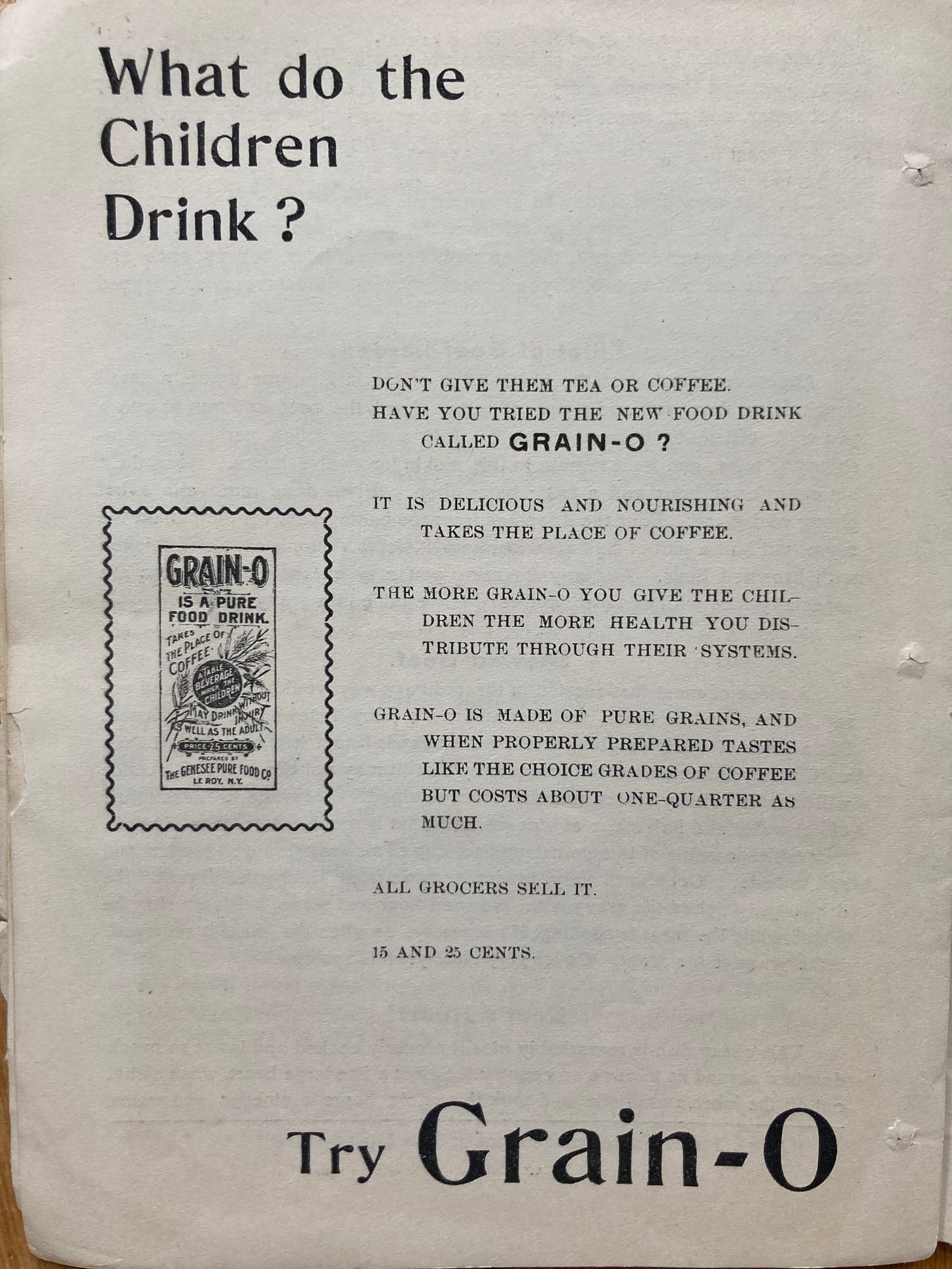
The Cohoes mothers may have had copies of the Gold Medal Cook Book, made by Washburn-Crosby, the precursor to General Mills, in Minneapolis in 1904. While made by a flour company, the recipes cover everything from Aspic to Waffles. I wonder if my copy was ever used, because there are no stains on the pages.1
I love looking at the dawn of food advertising. Emerging brands needed to convince people that their company’s food was measurably better than bulk or grocery brand foods and ingredients, and that their name was the name to remember. This is still the task of advertising, and it is impressive, and sad and outrageous, that billions of dollars pour through the food industry’s hands and into our ears, eyes and phones.
If you are curious how American food came to be, Andrew Smith explores this terrain in his book Eating History: 30 Turning Points in the Making of America Cuisine2. This is where I learned that Quaker Oats was one of the first branded foods, building on the success of patent medicine ads.
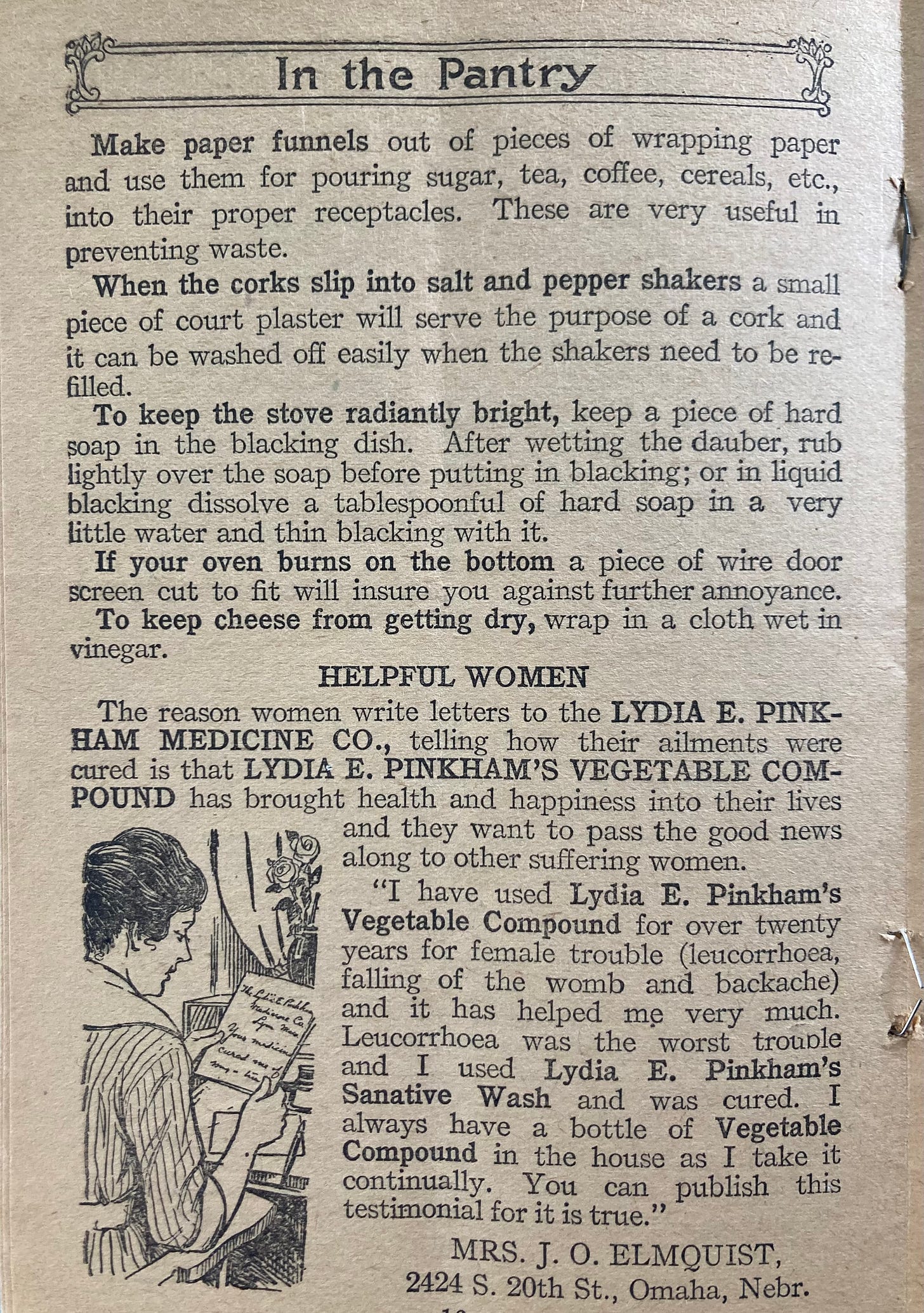
One of the best-known patent medicines was Mrs. Lydia E. Pinkham’s Vegetable Compound, “a botanic remedy for the disease of women.” The company printed pamphlets on history, household hints, and cooking, and lots of testimonials. Minnie Greenaway’s mother made one. In All Wool But the Buttons, Minnie writes that her sister was embarrassed by her mother’s letter was printed with their name and address; people read it and called her a Pinkham baby.
“I was childless until I was twenty-six years old, but then I started to take Lydia Pinkham's Compound with the result that I am now the mother of six beautiful children, two boys and four girls,” her father quoted the letter, playfully noting that they hadn’t married until they were 25.
(If you’d like to read Pinkham pamphlets, Harvard has a good collection online.)
The Gold Medal book I have is the size of a full sheet of paper, stapled and sewn together. The decorations are Art Noveau, and in all the pictures people are happy: a happy woman holds a sack of Gold Medal. A happy kid tries to pull a sack from a basket, presumably at a grocer’s. A happy man pushes a barrel of Gold Medal. The words GOLD MEDAL FLOUR run along the bottom of the pages, asserting its multiple uses, for pastry, cake, biscuits, and bread.
Washburn-Crosby was a real innovator in flour milling, introducing the middlings purifier to make whiter flour, always, in flour history, a socially desired thing; even in Greek and Roman times, having the resources to waste bran, showed status.
Washburn-Crosby was among the first mills in America to use roller mills, which sped up the milling process. Because this style works by separating grain kernels into many parts, even whiter flour was possible. By 1900, white flour was widely accessible, but in the baking neighborhood of Gold Medal’s cookbook, many different grains were also used. Sifted flour, meaning white Gold Medal, was often specified, but cornmeal, rye, buckwheat and oats were common.
My favorite recipes may be for Pan Cakes, because they separate the word into two! But probably just because I’m wildly fond of them3, especially in this wilting heat. I made the buckwheat cake recipe, with blue cornmeal, buckwheat, and some fantastic flour from Ironwood Organics, letting the batter sit overnight. There were no leftovers. Note how the cornmeal is mixed with boiled water and let to sit.
If you’re looking for an easy dinner, head for the griddle. Corn cakes made with leftover corn scraped from the cob are great with greens and beans, or salsa and sour cream. That’s been on the menu here at the Build-a-Deck Restaurant I’m happily running for my son Felix, husband Jack and all our friends that are helping with this construction project. Ever since we bought this house in 2001, Jack has wanted to tear off the back porch and make a deck. Now that we have a 21-year-old who likes to make stuff — we have a 26-year-old who loves to teach people about plants too — the dream is coming true. Kind of unbelievable, really.
I hope your days, dreamed and defeating, ideal and real, are serving you well, Dear Readers.
Yours, Amy

I’ve been reading Northern Hospitality: Cooking By the Book in New England by Keith Stavely and Kathleen Fitzgerald, and it has me thinking about the gap between printed matter and actual practices. I realize that all of my imagining by reading may be flawed, because who knows how representative cookbooks and pamphlets are of what people actually do in their kitchen! But I mention this as a flaw in my pursuits. It’s not a stop sign.
Andrew Smith talks about his book Eating History at Kansas City Public Library.
I wrote about pancakes and fresh flour in my own cooking pamphlet, The Pancake Papers. It is really popular with flour mills, because I describe the differences in stone-milled flour and how to use them. Carolina Ground, Barton Springs Mill and Janie’s Mill have all ordered them from me, and Janie’s Mill regularly sells them. So if you’re ordering flour, see if you can grab one of my booklets, too! The Common Grain Alliance also stocks them at their grain stands and events.

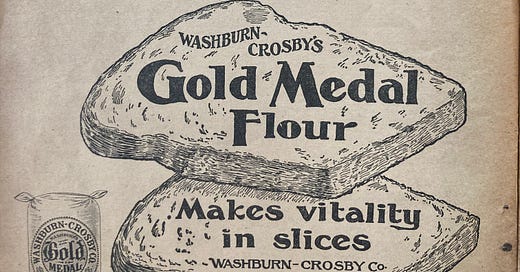


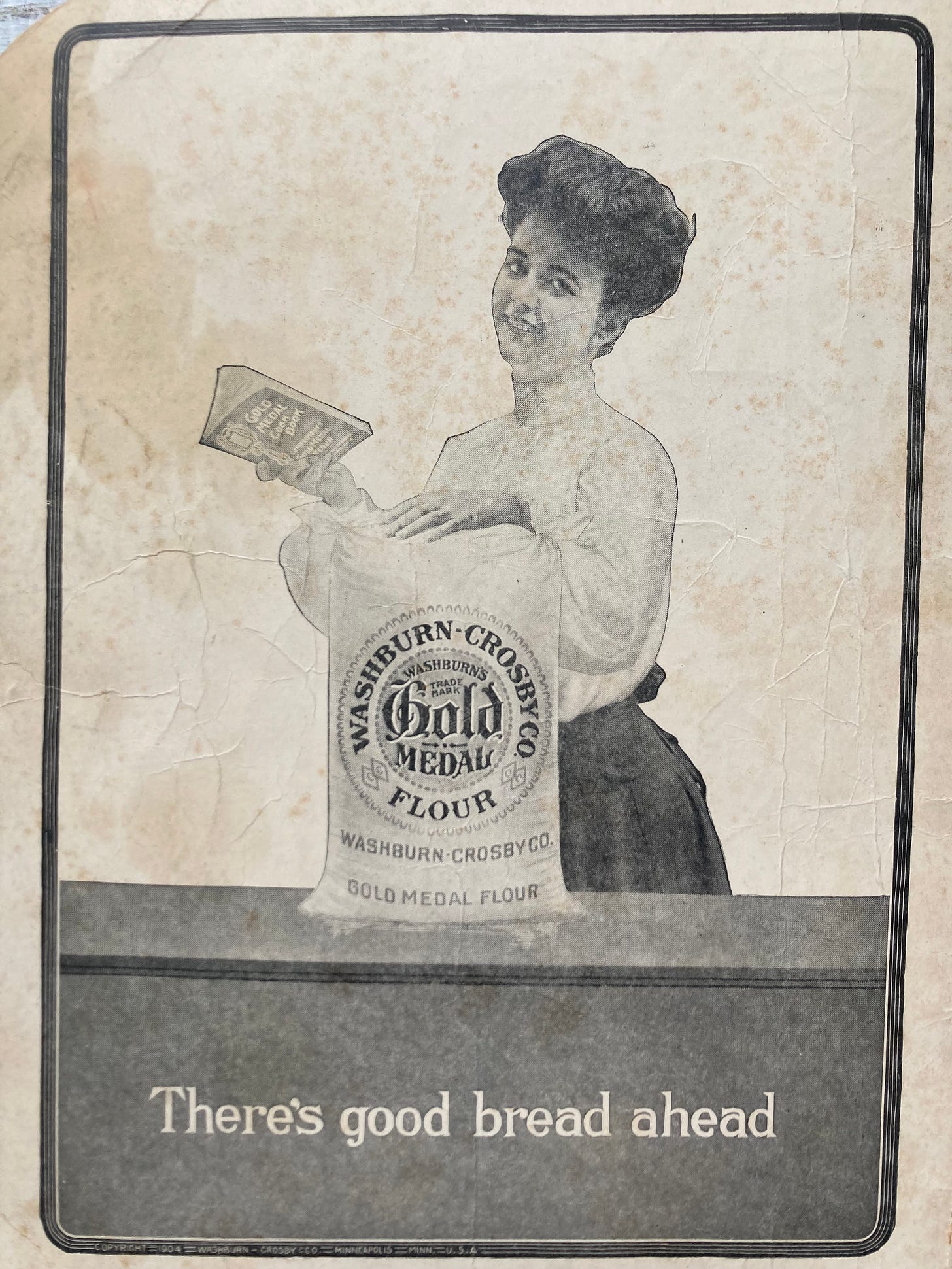

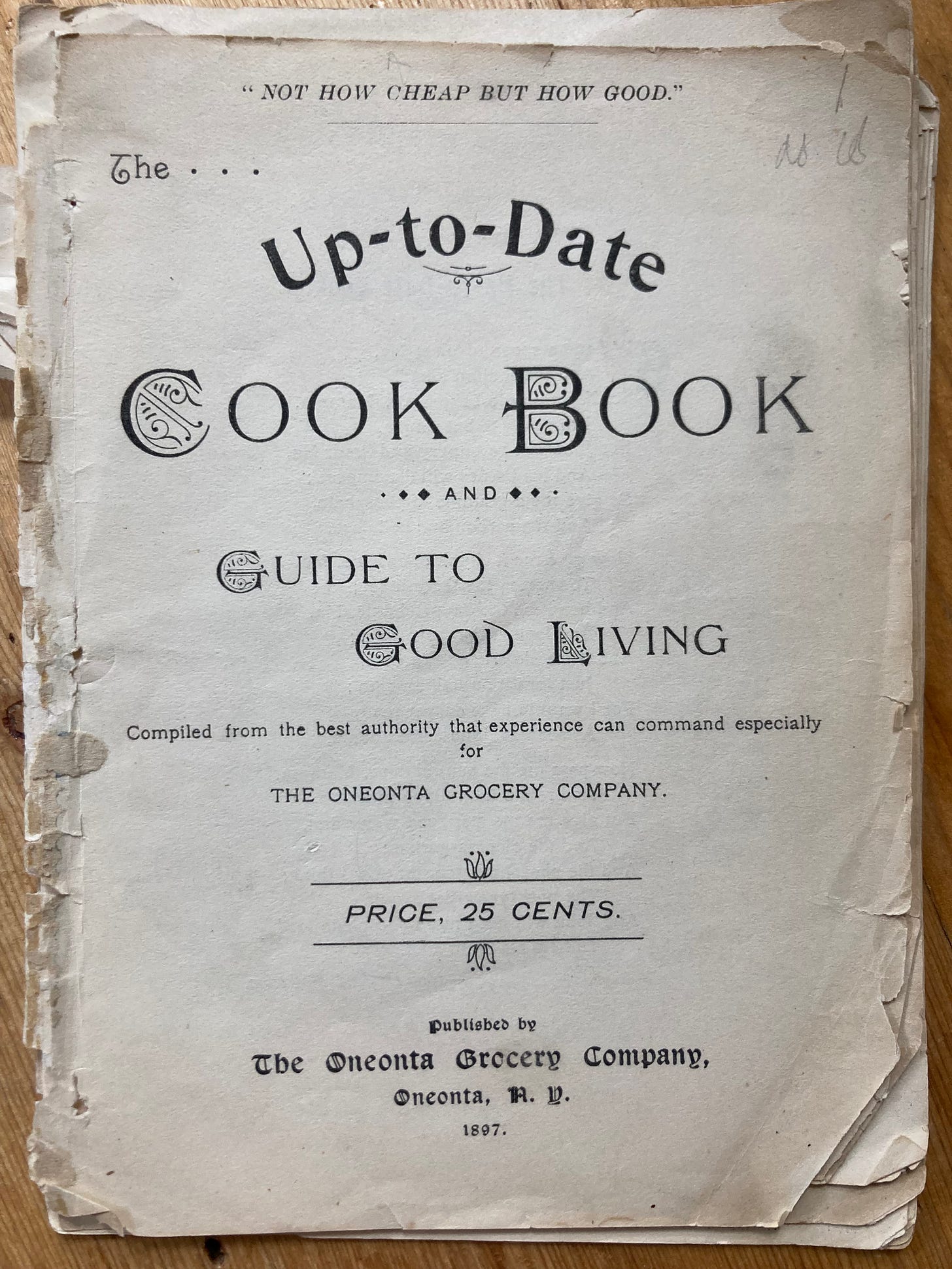
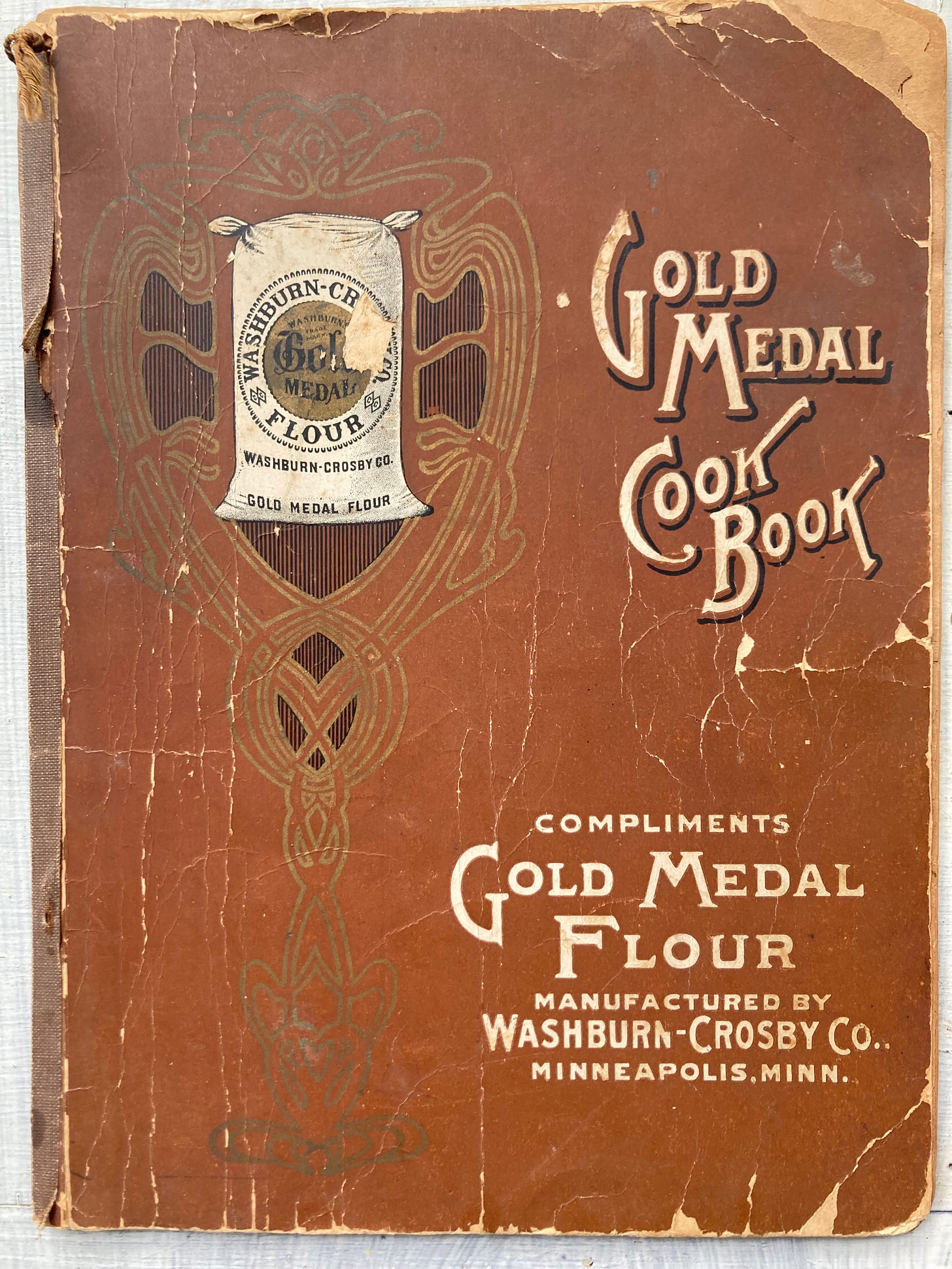
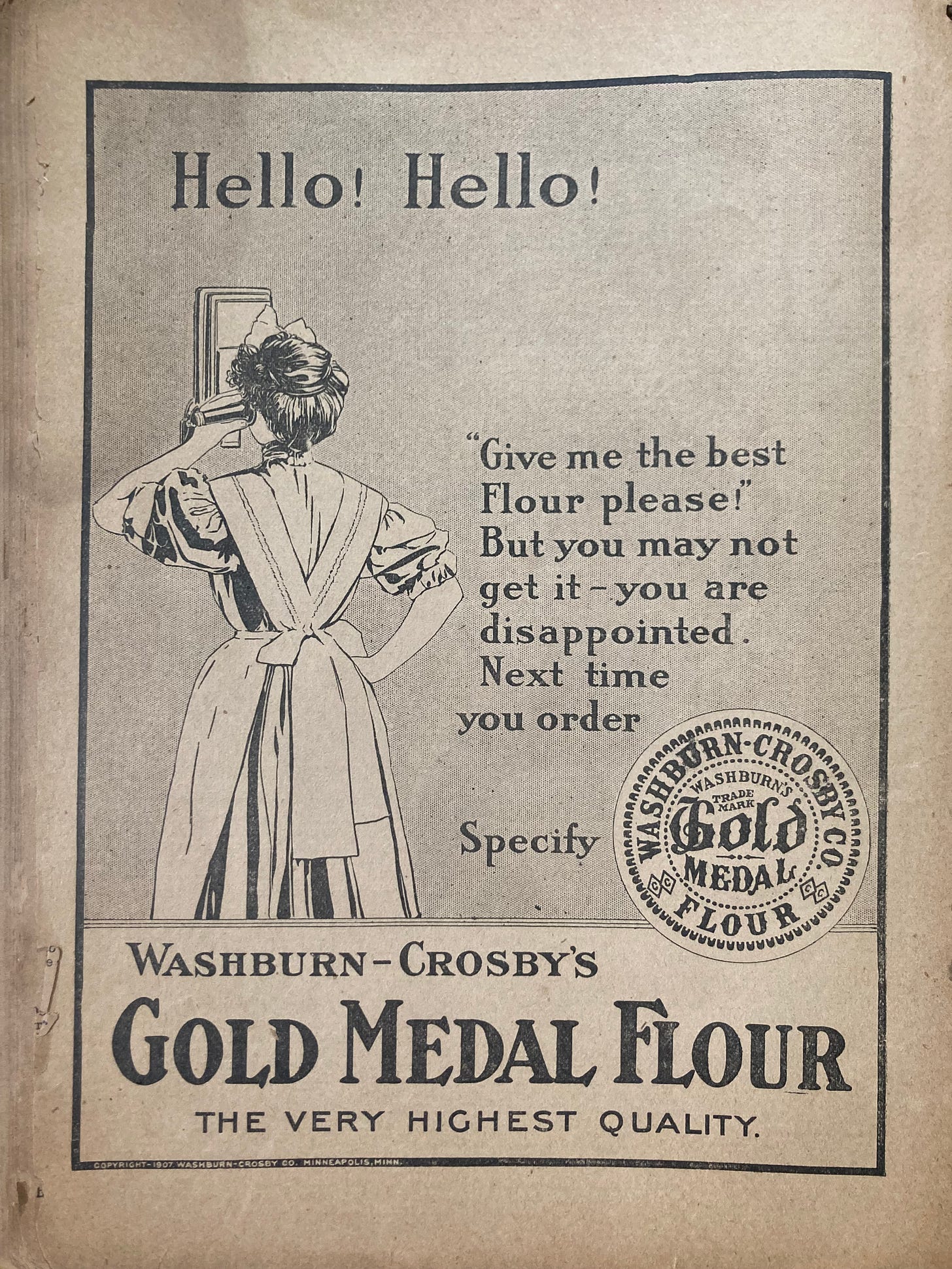
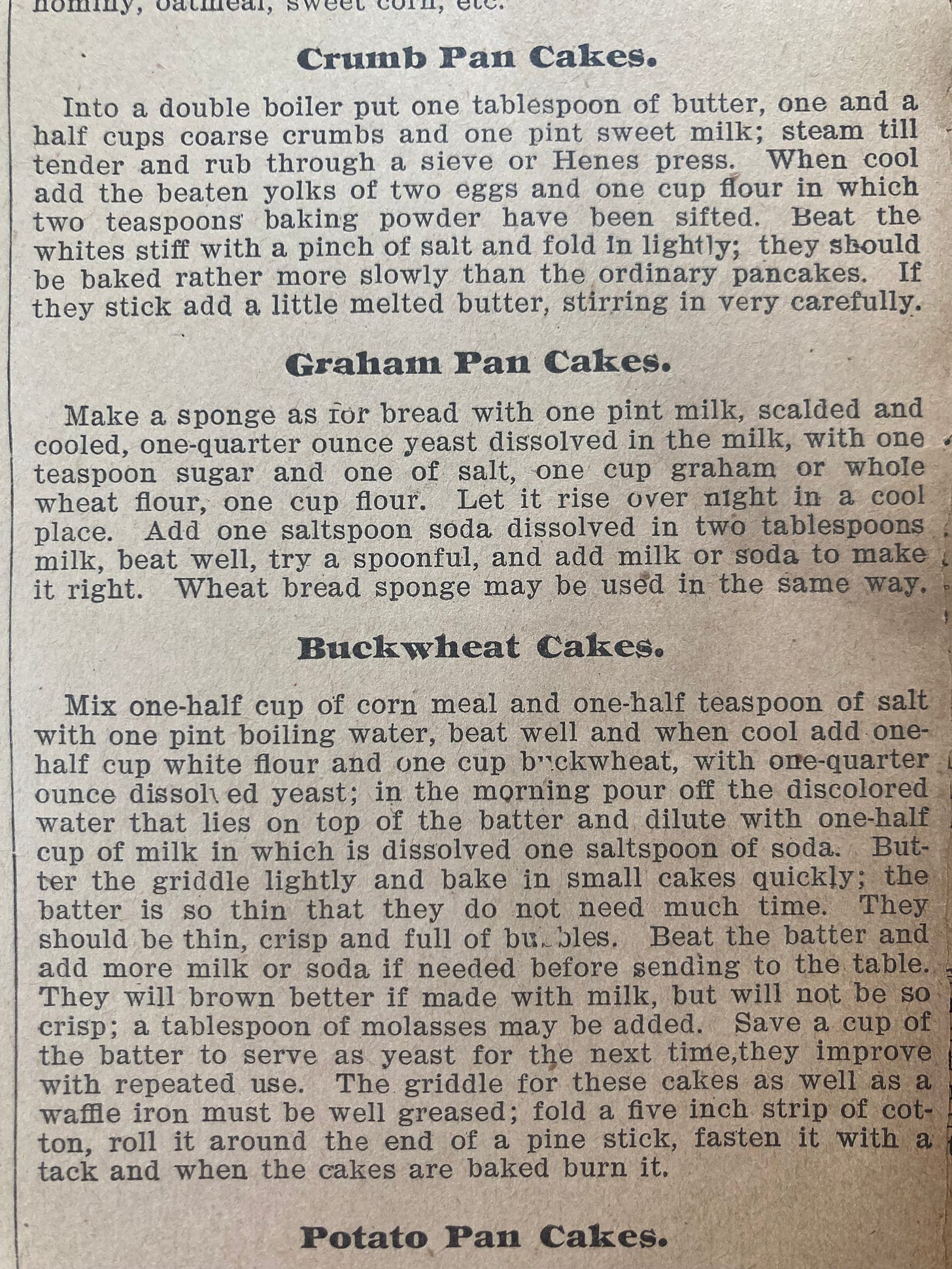
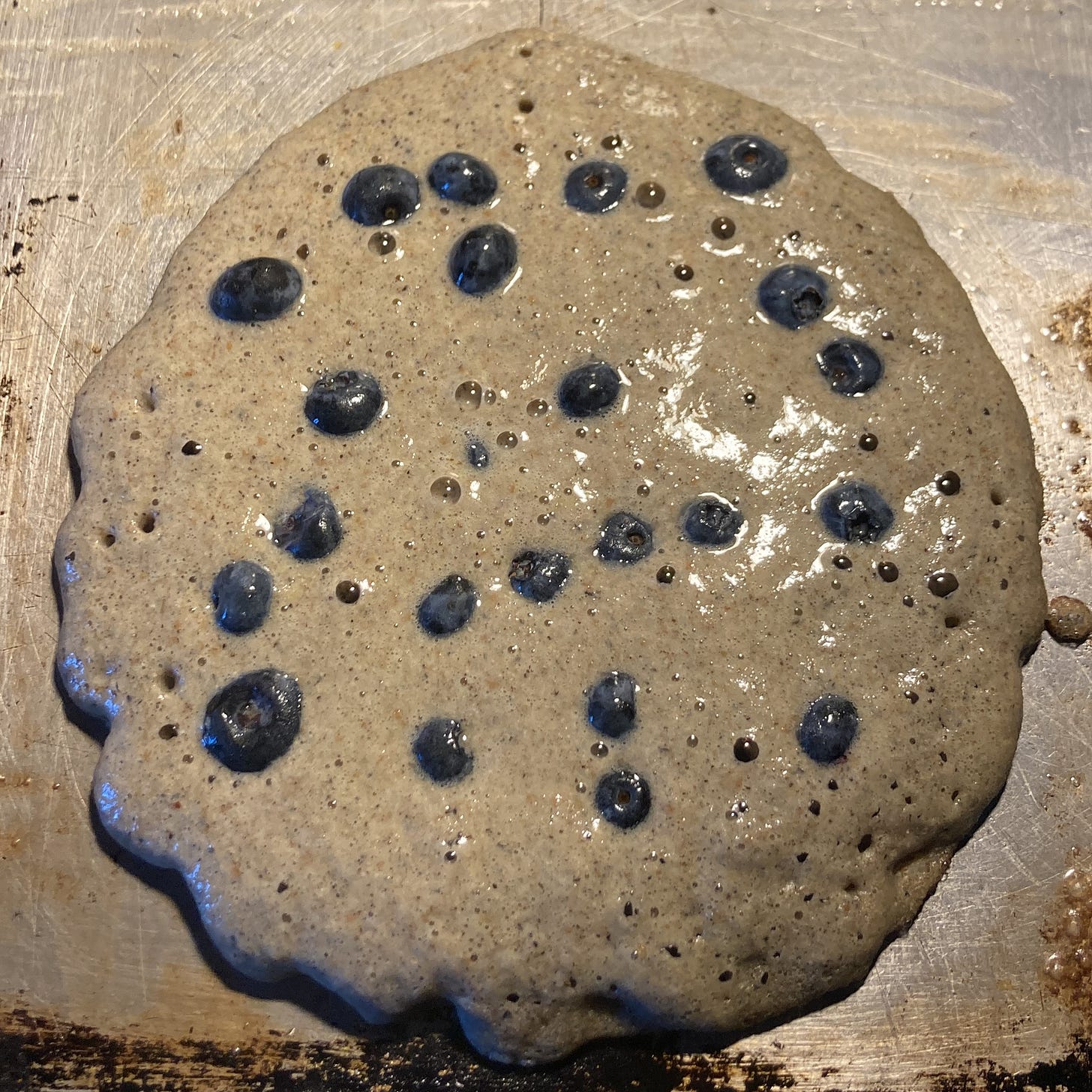
This was a wonderful read! I don't have a huge collection of old cookbooks/old cooking pamphlets, but I sure do enjoy what I have.
Don't know if you're aware of this: https://libguides.lib.msu.edu/cookbooks
And this: https://lib.msu.edu/news/article/2024-03/msu-libraries-receives-significant-estate-gift-support-culinary-collection#:~:text=In%20addition%20to%206%2C500%20cookbooks,ephemera%2C%20menus%20and%20personal%20papers.
PLEASE, use #CertifiedOrganic flour. If not, it is LOADED with Roundup!